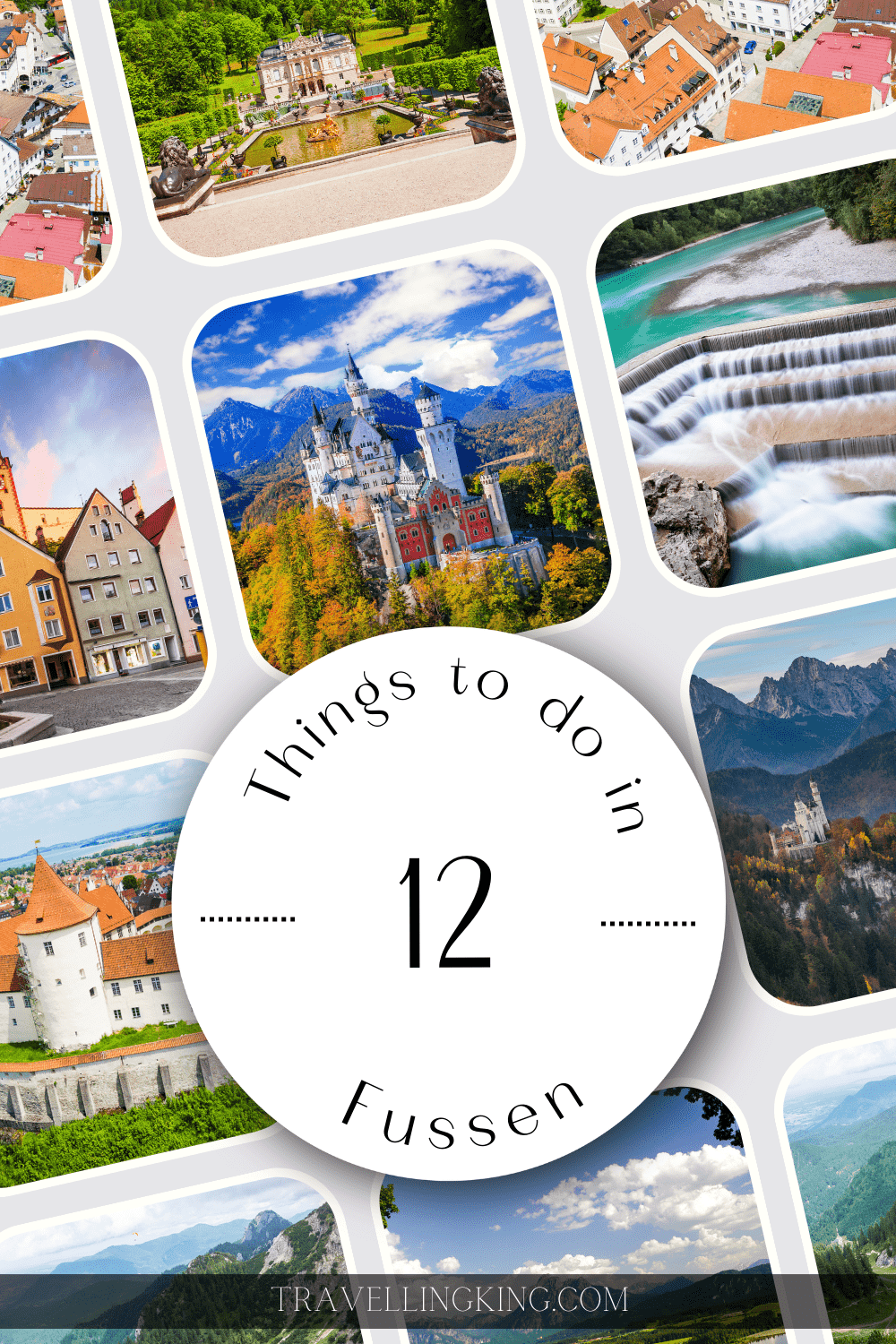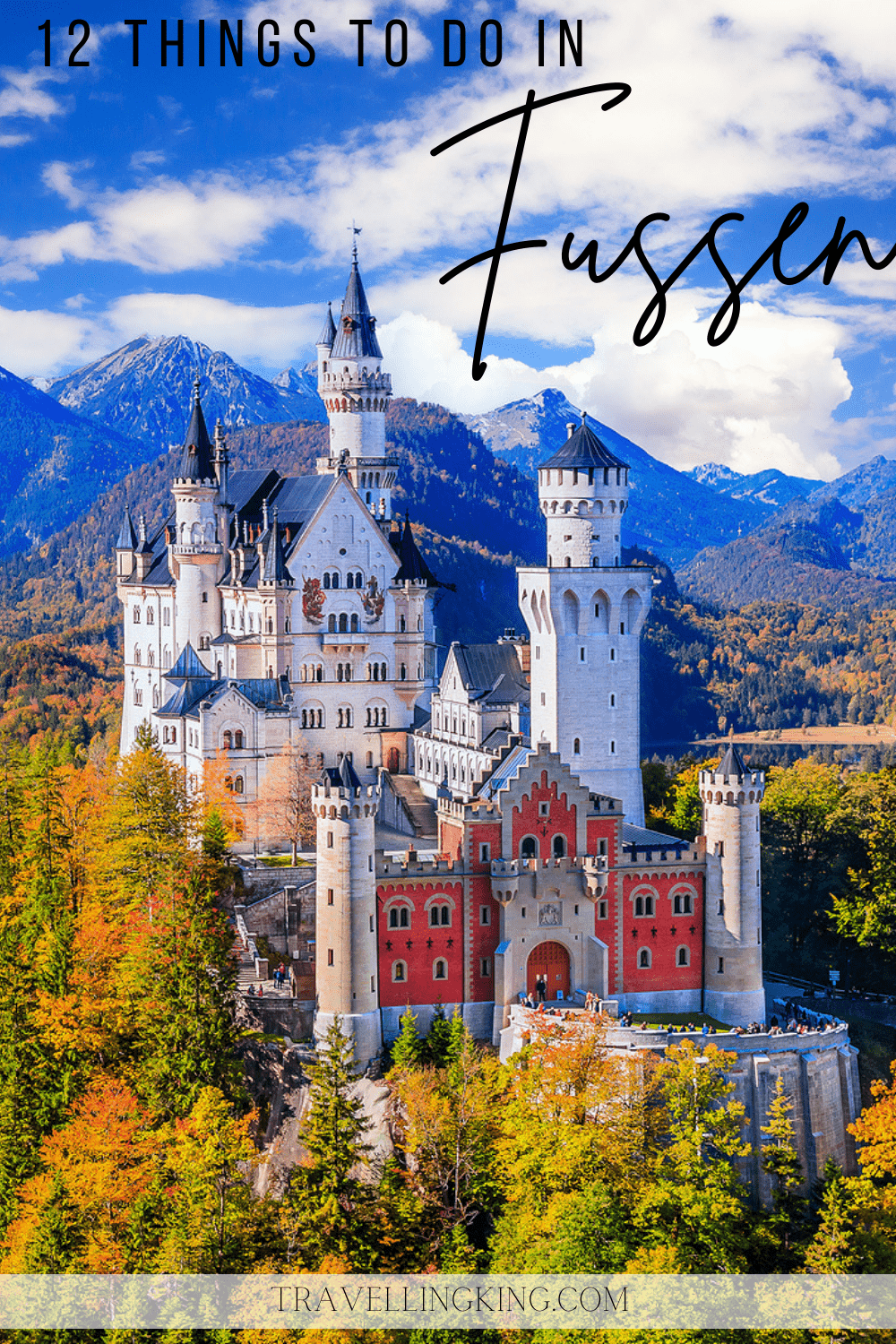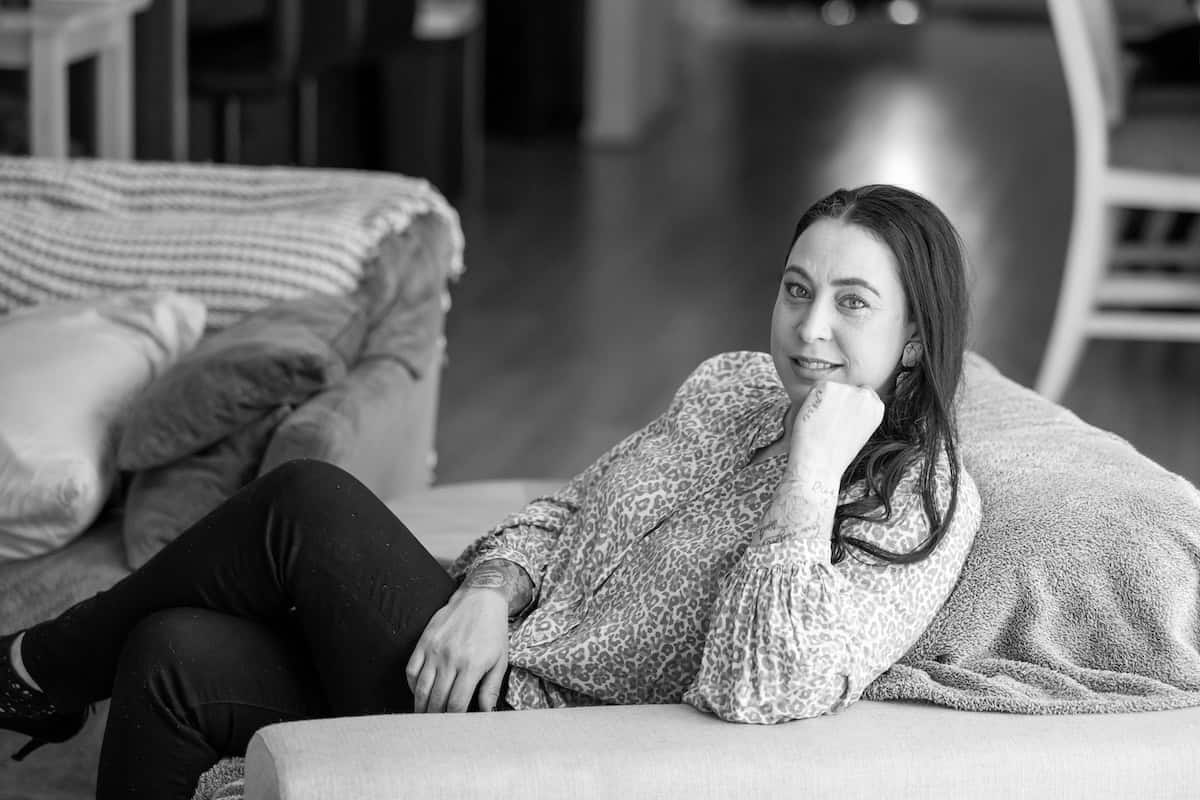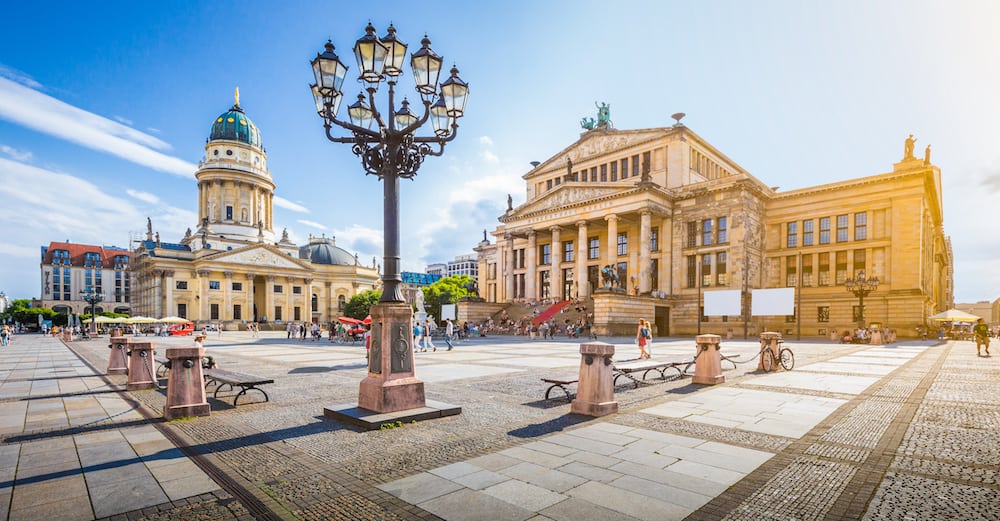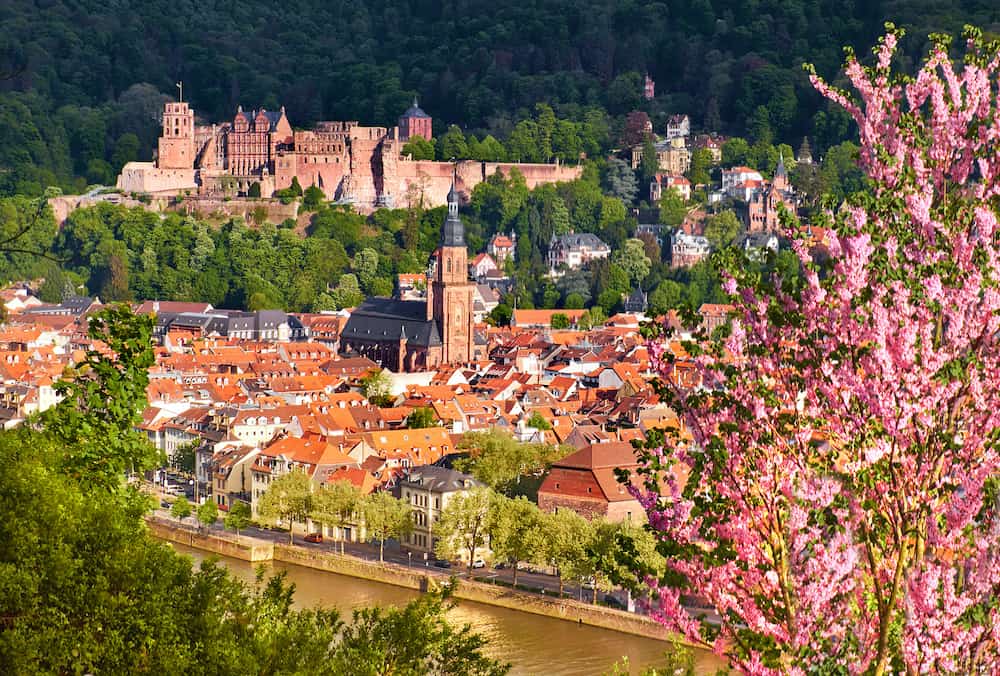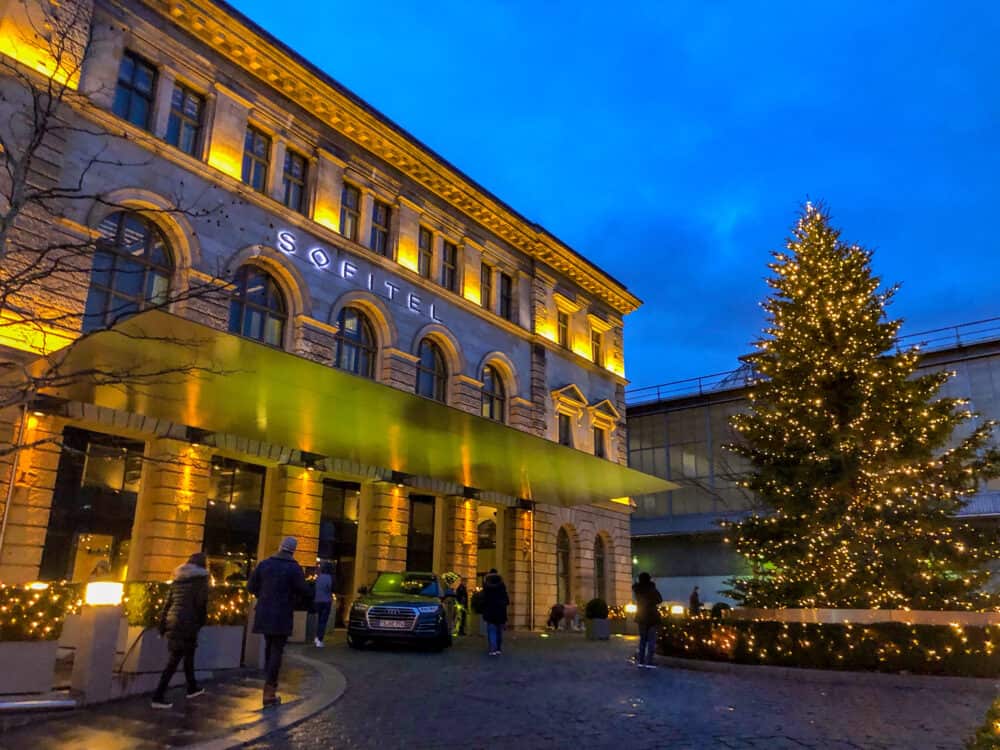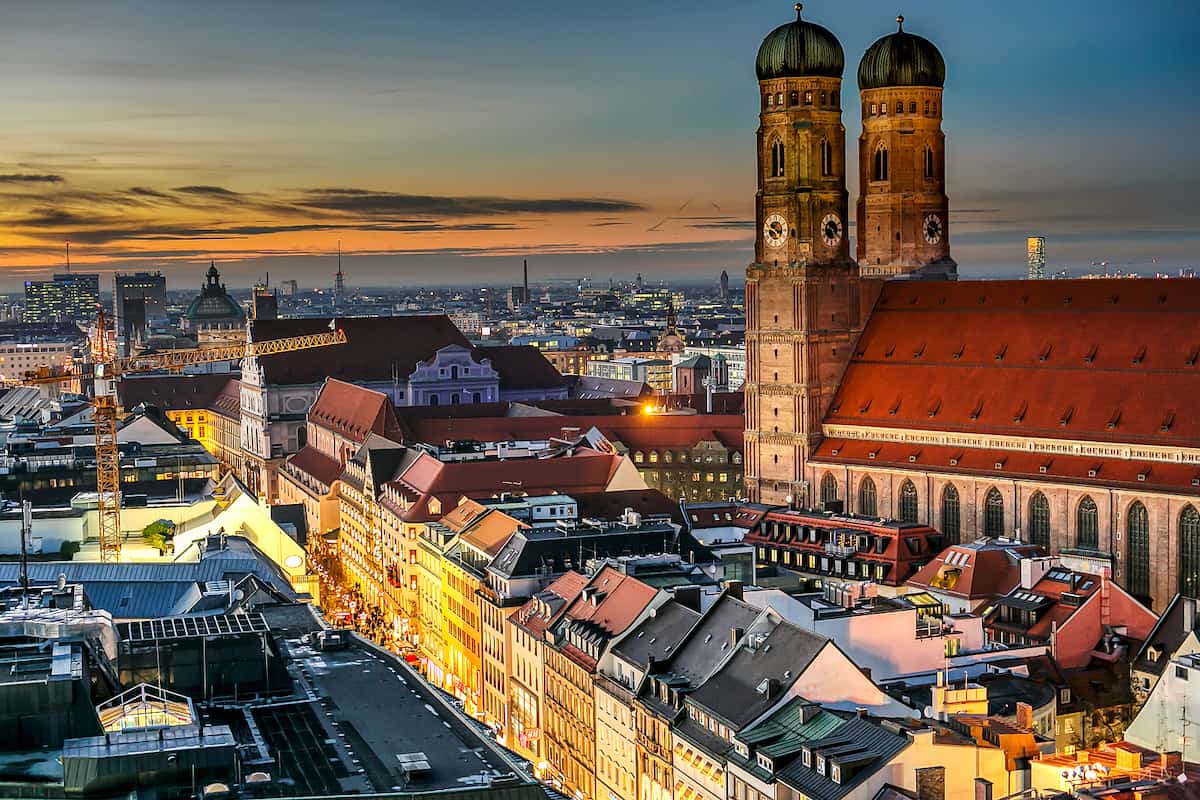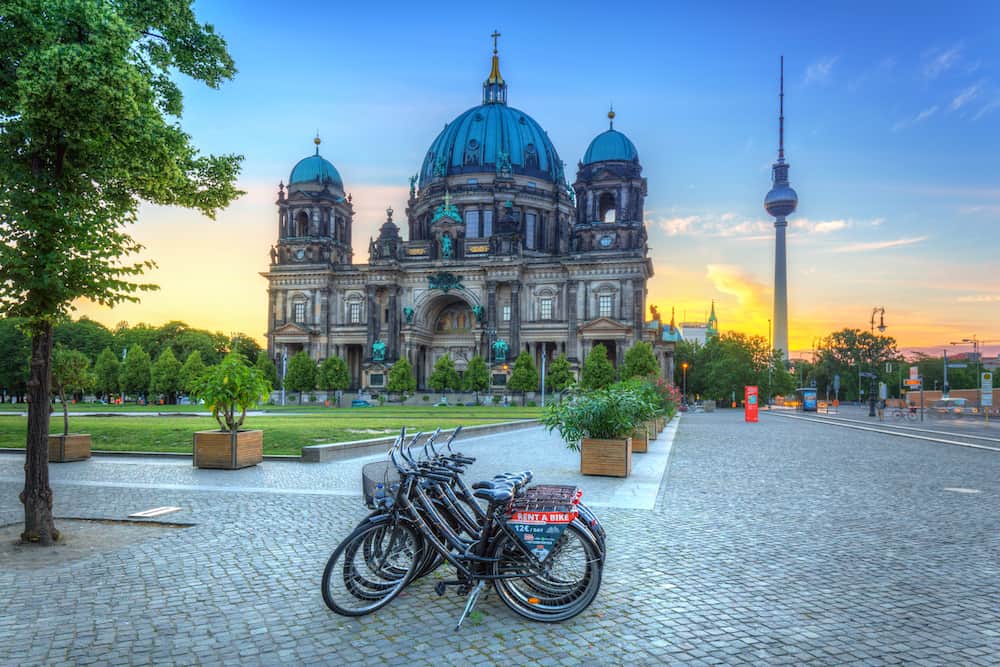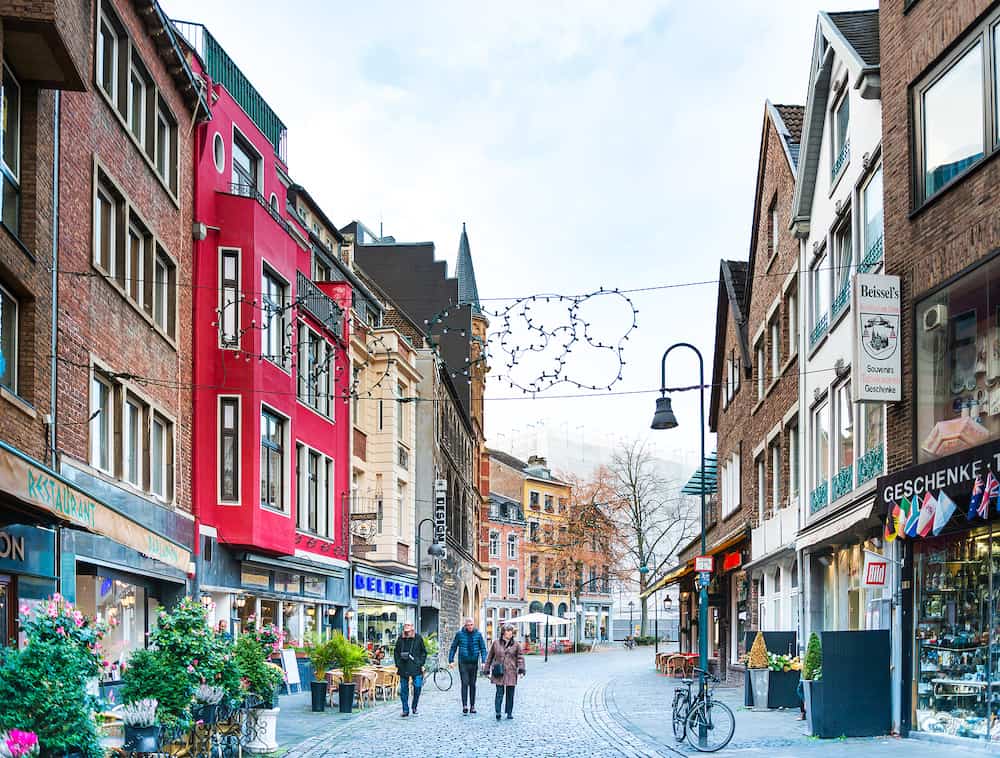12 Things to do in Fussen
Füssen Germany is a charming Bavarian town located in the district of Ostallgäu between Munich in Germany and Innsbruck in Austria.
The perfect place for an easy day trip from either city, Füssen boasts beautiful scenery and an abundance of medieval architecture at 800-1200 m above sea level, making it the highest altitude town in Bavaria.
Füssen dates back to the 12th century when the King of Bavaria built Neuschwanstein Castle on top of Mount Hohenschwangau.
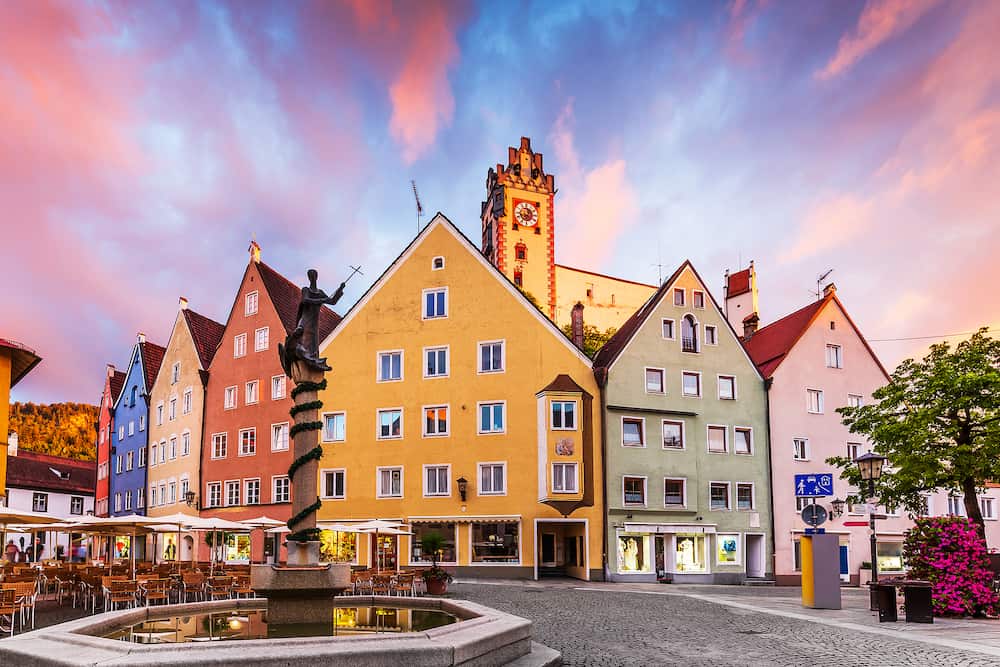
A wonderful little town with much history that can be learned about in a day or two, Füssen is a must-visit for anyone interested in Bavarian culture.
If you are visiting the Allgäu region of Germany and want to see some attractions that are not too far out of the way, this is a great place to go.
In a hurry and need help quick?
Making last-minute plans for your Füssen Trip? We’ve got you covered. Our recommended hotels and tours for a getaway to Füssen are listed below.
Recommended hotels:
- Old Kings Design Hostel (hostel)
- City Apart Hotel Füssen (budget hotel)
- Hotel Ludwigs (mid-range hotel)
- Hotel Sonne (family hotel)
- Ferienwohnung-Königsschlösser (luxury hotel)
Recommended tours:
- Canyoning basic in the Starzlachklamm
- Fairytale Castles Private Tour from Füssen
- Rent a bike trom fuessen to Neuschwanstein castle
- Füssen Private Walking Tour With A Professional Guide
Other Helpful Links
- Cheap flights
- Savings on accommodation from hostels to luxury hotels
- Affordable car rental options
- Affordable sightseeing tours and day trips
- Travel Adapter – All in one so you don’t have to carry a bunch around
- Wise Card : hold up to 40+ currencies at once to spend in in over 150 countries
This post contains some affiliate links for your convenience. Click here to read my full disclosure policy.
Old Town
Nestled in the foothills of the Alps, Fussen’s small old town is around 700 years old. With many pastel-colored historical buildings, cobblestone streets, churches and shops, it makes for a beautiful walk or bike ride through its medieval centre.
Adding to this, you can also take an exhilarating trip on one of the town’s cable cars to get stunning panoramic views over mountains and valleys.
If you are travelling through Germany and have time for another stop on the way, Fussen is an easy day trip from Munich.
This little town has plenty to offer, with lots of cafes and restaurants serving traditional Bavarian food! There are plenty of small souvenir shops where you can buy gifts for your friends at home.
In the Old Town, you can also find Hohes Schloss (High Castle). This sits atop a high rock overlooking the town. The castle is one of Bavaria’s best-preserved medieval structures.
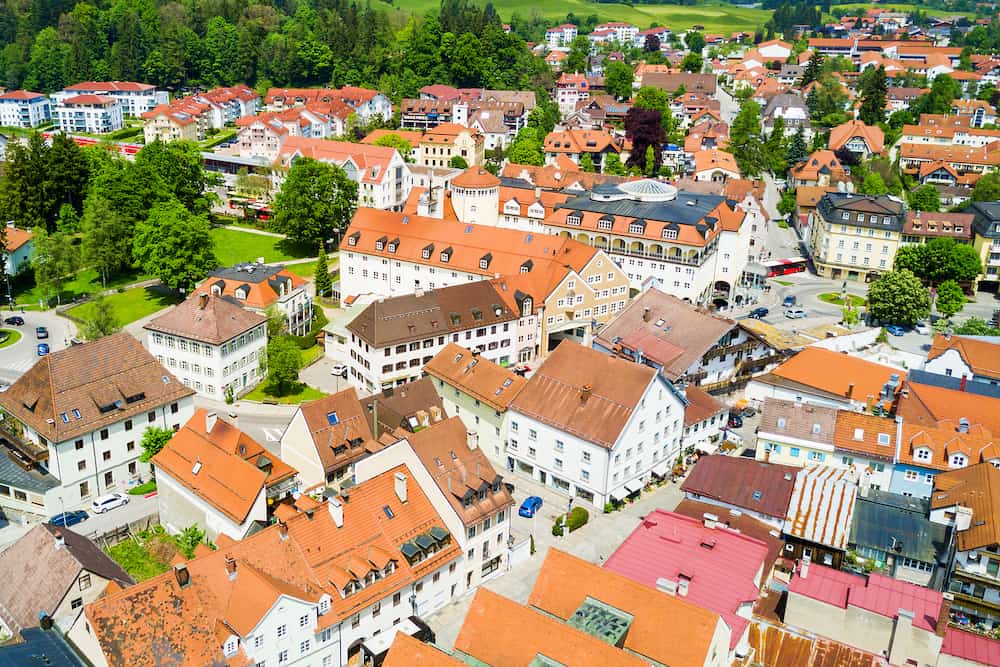
Hohenschwangau Castle
Hohenschwangau Castle, built in the 12th century and originally home to the knights of Schwangau, fell into disrepair over time. In 1832, Crown Prince Maximilian—who later became the father of King Ludwig II—acquired Schwanstein Castle. Between 1833 and 1837, he rebuilt it in a Gothic style as Hohenschwangau Castle.
The rebuilding took place over a number of years, with the family using it as their summer residence and for hunting.
After his father’s death, King Ludwig II took over the castle and spent much of his time there until the completion of his new home, the Linderhof Palace. The Wittlebasch family has owned Hohenschwangau Castle since 1928.
The interior of the castle from the 19th century has been preserved. Each room is decorated with murals, which were originally designed by Moritz von Schwind and Ludwig Lindenschmidt.
The whole castle lives in the spirit of a romantic era and can be seen reflected in names such as Swan Knight’s Hall. There are also several elements that reflect a living attachment to sagas and history.
The Castle Courtyard is situated within the Castle Garden. Surrounding this courtyard is a wall with castellations.
These are projections that resemble small turrets and are often used for decoration or defence purposes. In the centre of a circular flowerbed within this garden, there is an ornamental pool with water spouting from the mouth of a carved swan sculpture. Visits to the castle are by guided tour only.
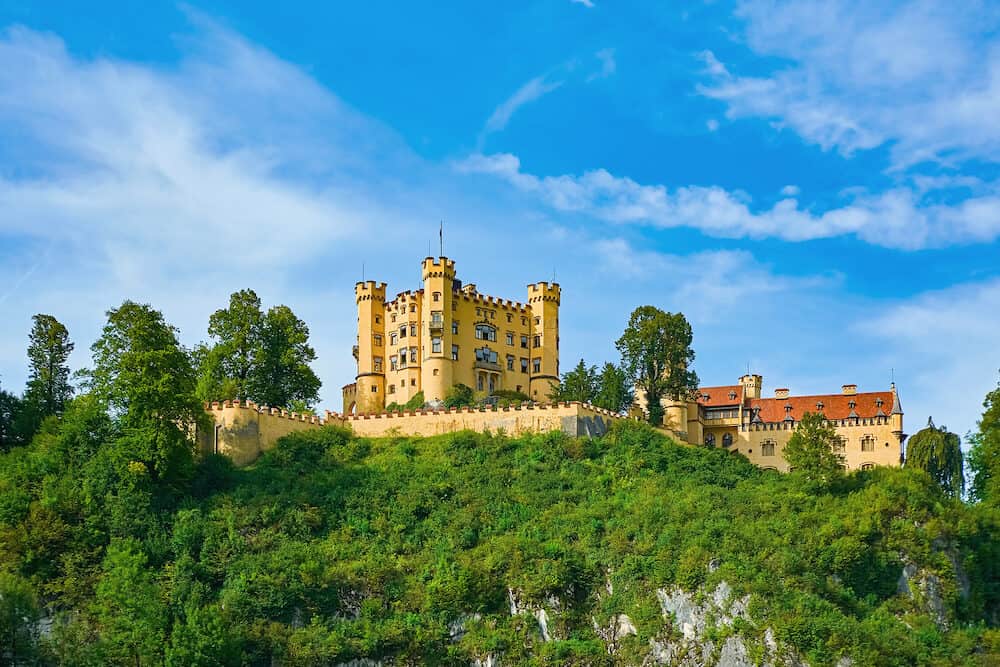
Neuschwanstein Castle
Neuschwanstein Castle was built between 1869 and 1886 by King Ludwig II of Bavaria in homage to his friend and composer Richard Wagner. The castle is a Romanesque Revival palace located high above the village of Hohenschwangau near Füssen, in southern Bavaria.
Ludwig II funded the construction of his palace with a combination of both personal money and borrowing money.
Construction was never fully completed, as the king only briefly occupied the castle before he mysteriously died later in 1886.
The castle was originally intended as a private retreat for the reclusive king, but it became open to the public every day beginning in 1888 and has seen over 61 million people enter since that time.
The castle was styled as a medieval knight’s castle in the 12th/13th-century style and is thought to be what Walt Disney fashioned the Sleeping Beauty castle on after he was inspired by the castle’s beauty and grandeur.
It is one of Europe’s most frequented tourist attractions, attracting 1.3 million visitors per year. You can only visit the interior of the castle on a guided tour, which takes around half an hour.
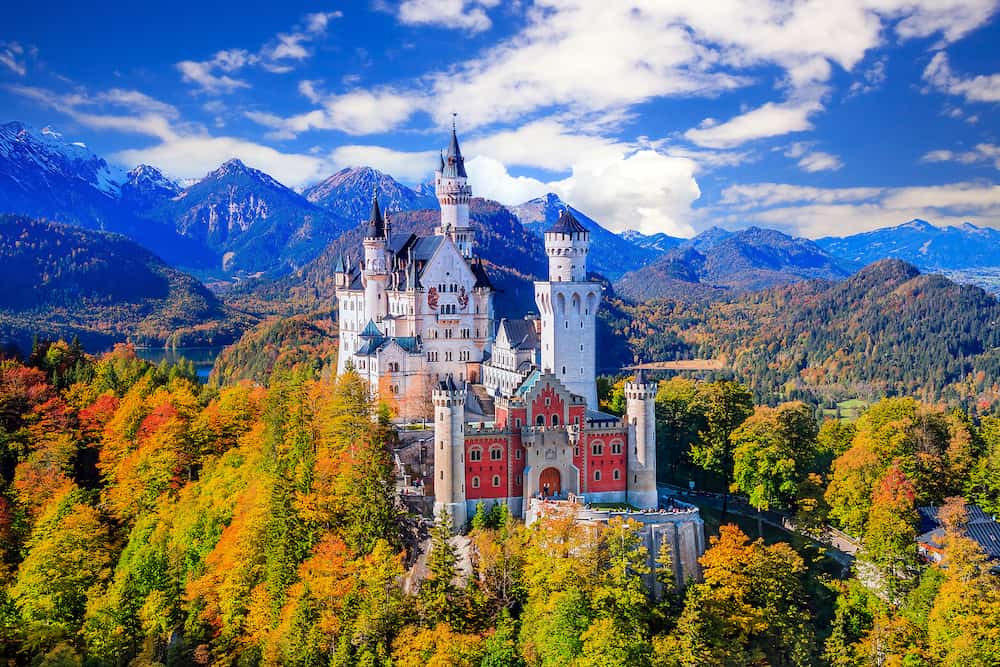
Marienbrücke
Marienbrücke is a bridge near Füssen that spreads across Pöllat gorge. From here you can see the fabulous sight of Castle Neuschwanstein. The translated name is Mary’s bridge, after King Ludwig’s mother, Queen Mary.
King Ludwig built the bridge so that Castle Neuschwanstein could also be admired from a distance and many people visit the bridge to get one of the best photos of the castle.
This is due to the incredible view of the castle that can be seen from the bridge, which spans the gap over a waterfall nearly 100 meters below.
There are times of the year that access to the bridge is closed, more likely in winter due to the very icy conditions, so make sure you set your expectations that you might not be able to get over here.
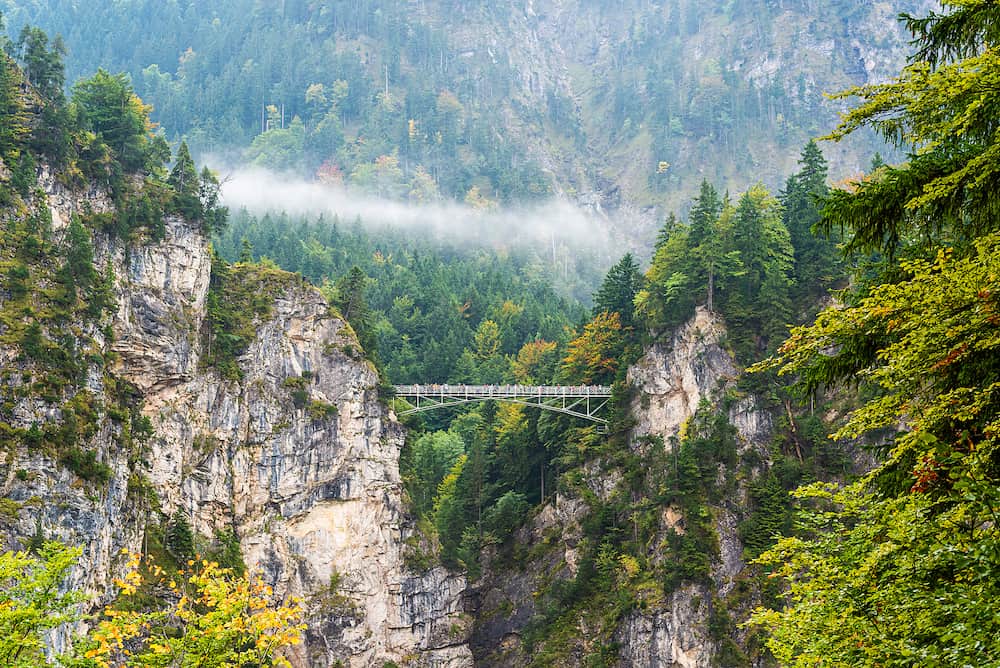
Linderhof Palace
Just a 50-minute drive away from Fussen, you will find Linderhof Palace. Linderhof Palace, one of four palaces built by King Ludwig II, is a small but ingenious summer castle nestled in the remote Graswang Valley.
Although Ludwig II never saw many of his grandiose projects completed, this was one palace he did live to see finished. Visitors approaching the palace are greeted by a fantastic, over-the-top scene that evokes images from a fairytale.
In 1874, the palace had many renovations including a new vestibule, staircase, tapestry rooms and an impressive hall of mirrors. The outside of the house now looked like a stately French palace.
The Palace also has beautiful gardens within its grounds. Linderhof Park garden is a picturesque setting based on Italian-inspired Renaissance gardens, with its terra-cotta pools and fountains. This really is a stunning place worth visiting.
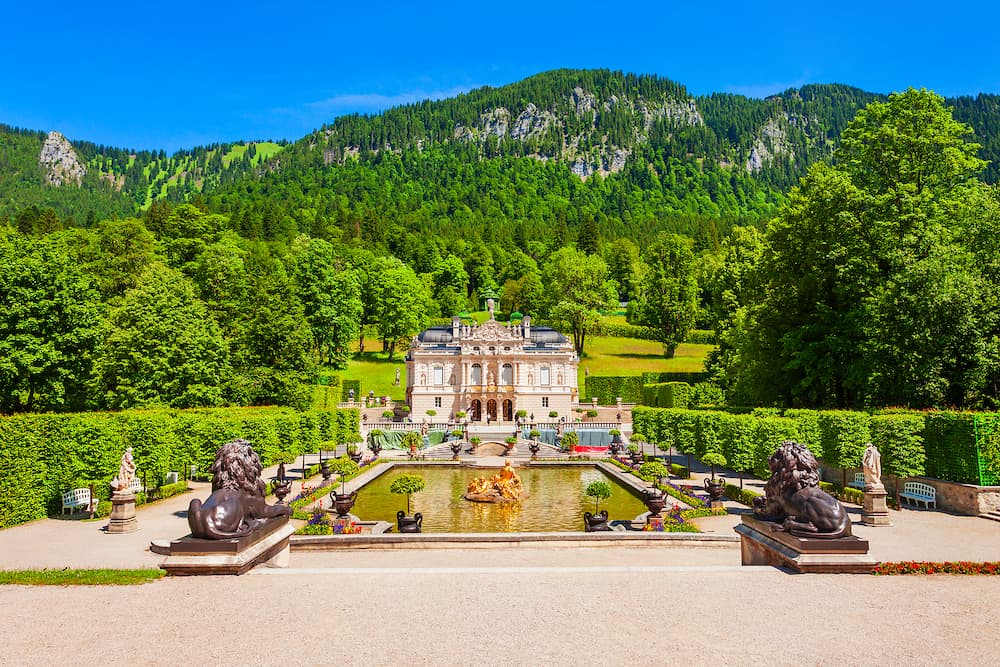
High Castle
The “Hohe Schloss” is located high above the city of Füssen, where once it was used as a summer residence by the Prince-Bishops of Augsburg.
Today, it houses the branch gallery of the Bavarian State Painting collections alongside being a tax office. The High Castle houses more than its share of interesting rooms and artworks with its inner courtyard containing some unique paintings on illusionary techniques.
The Knight’s Hall, with its intricate ceiling carvings, is the museum’s most outstanding feature. The newly redesigned terrace garden, which contains many plants that have been used medicinally and aromatically for hundreds of years, is worth a look.
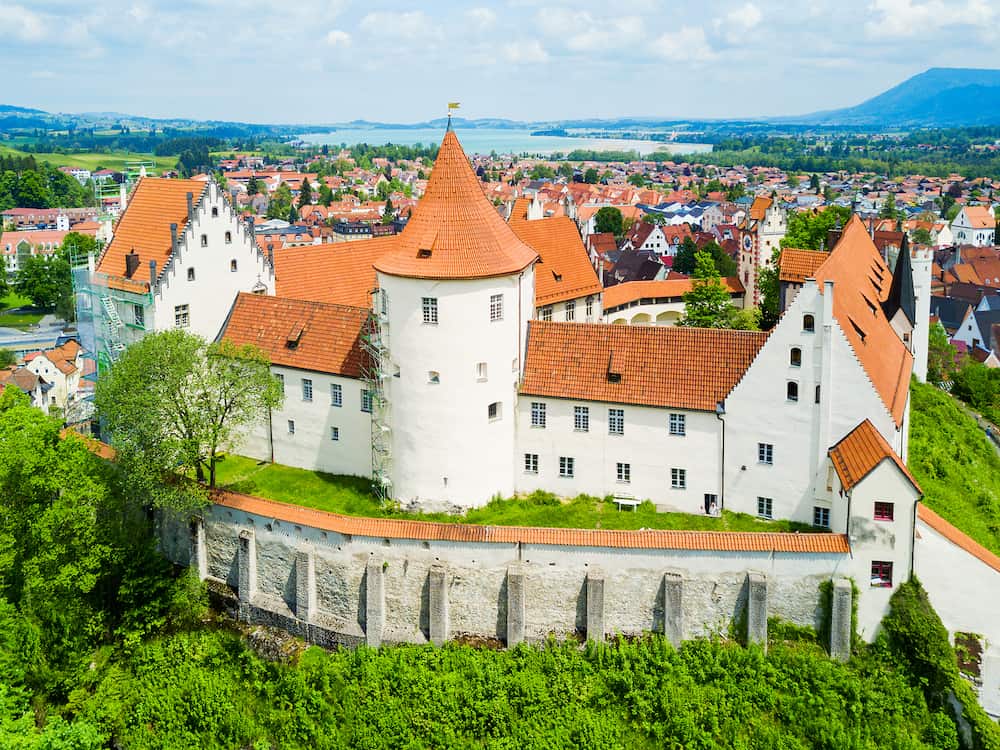
Lechfalls
You can find the man-made Lechfalls in Füssen, Germany on the Lech river, about a 10-minute walk from the centre towards the Austrian border.
Located in a gorge carved over thousands of years by water flow from an Ice Age lake, they are one of the most popular destinations and they are a major natural attraction. This is largely due to the amazing turquoise colour of the water, so a visit here is highly recommended for the beautiful sight.
The Lechfalls consist of five separate tiers, each flowing into the next. The tallest drop is called “Königlicher Wasserfall” (the Royal Waterfall) and usually has a lot of water running through it due to its position at the junction between two smaller ones below.
However, this can vary depending on how much rain or snow melts in nearby mountains during any given year! The best time to visit this site is during the spring when all three parts of the Lech River, upper, middle and lower are at their fullest.
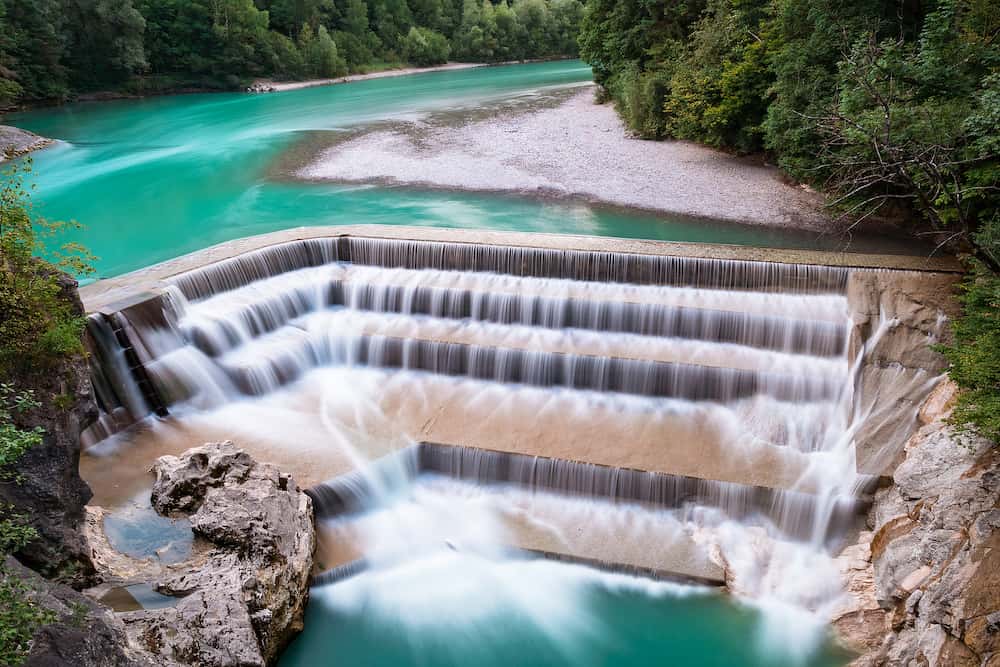
The Museum of Fussen
The Museum of Füssen, located within the southwest wing of St. Mang’s Benedictine Monastery, houses archaeological finds that date back more than 1,000 years.
Not only are there a number of historical artefacts in the Museum, but also many valuable works that provide insight into the history and culture of Füssen.
The museum contains many antique musical instruments, including violins and lutes. Fussen played an important role in the commercial manufacture of lutes.
The museum also has several paintings from artists like Paul Zeiller and Johann Jakob Herkomer, plus many more, offering a great insight into Füssen and the history of its people.
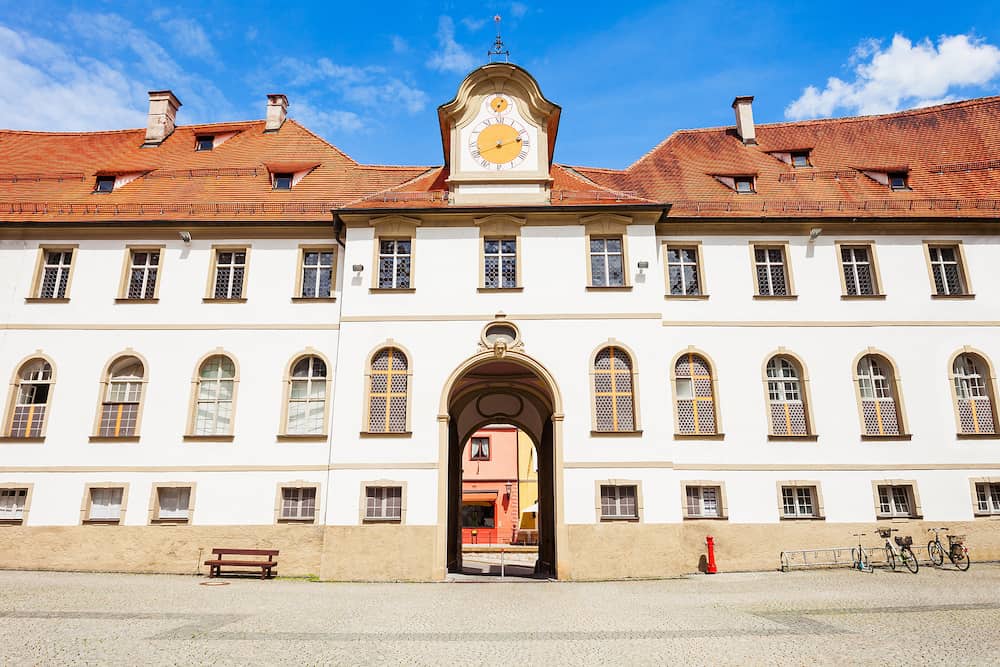
Tegelberg Cable Car
The Schwangau region is the main gateway to King Ludwig II’s famous castles, but it also boasts Bavaria’s largest nature reserve. In order to reach the summit of Tegelberg (Tegel Mountain) for the incredible views of Schwangau and the surrounding peaks, the easiest route is via a cable car ride.
The Tegelberg Cable Car has been in operation since 1928, making it one of Europe’s oldest and most famous cable cars. It is also Germany’s highest cable car that operates during the winter season at Füssen Ski Resort, a popular destination for skiers from around the world.
You can get on the cable car at Tegelbergbahn in Schwangau. Each cabin can hold up to 44 people, and the ride lasts about 10 minutes. During this time visitors get a unique view of Neuschwanstein Castle and the Ammer Mountains if the weather is clear.
In the summer, Tegelberg mountain is a lovely place to hike as there are trails for walks with family and also challenging routes. Whilst in the winter, there are plenty of skiing slopes for beginners to advanced.
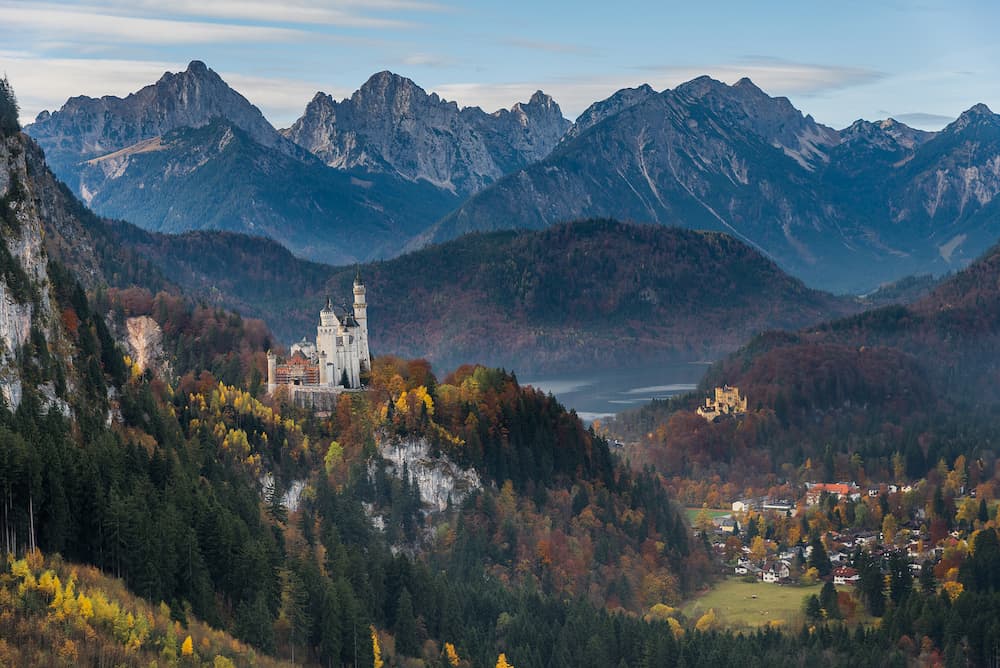
Hiking In The Alps
If you want to hike in the Alps, Füssen makes a perfect base camp! You can choose from many different hikes of varying lengths from an easy afternoon stroll up to challenging multi-day excursions.
In the area near Füssen, there are ten lakes with hiking trails that take you past water. If you drive a bit farther on any of these roads, then it is not long before you get to the starting point for hiking up Germany’s highest alpine lake.
Be aware that wild camping is not allowed in Bavaria, so if you are planning on a multi-day hike excursion, you can find plenty of mountain huts available. If you prefer to cycle rather than hike, you can rent a bike and explore the cycling trails that are near Füssen.
Winter is another good time to visit Füssen. In winter, you can enjoy multiple outdoor activities such as skiing at one of the nearby resorts. The Alps look even more spectacular when they are blanketed in thick white snow!
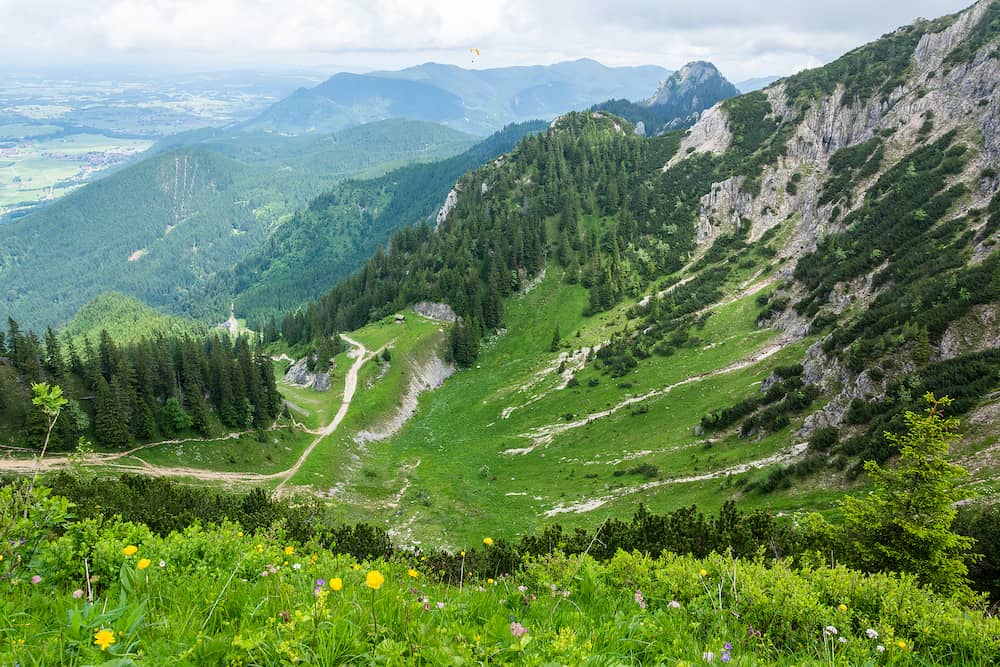
Swimming in the Lakes
There are ten lakes located near Fussen offering plenty of outdoor recreational activities both during the summer and the winter months. Lake Forggen is the fourth largest lake in the area and also offers numerous water sports possibilities.
It is popular among hikers and cyclists as well, who can find a pleasant path along its riverside. During the warmer months, passenger boats travel on Lake Forggen and offer views of both Neuschwanstein Castle and Hohenschwangau.
Lake Hopfensee, also known as the “Allgäuer Riviera”, has warmer water than some of its counterparts. For those who do not like swimming in cold lakes or rivers, it makes for a perfect summer retreat, where you can relax on the bathing beach Hopfen.
Lake Alpsee also offers swimming, beautiful views, lake walks and sporting activities. In the winter months, the lakes become ice skating rinks.
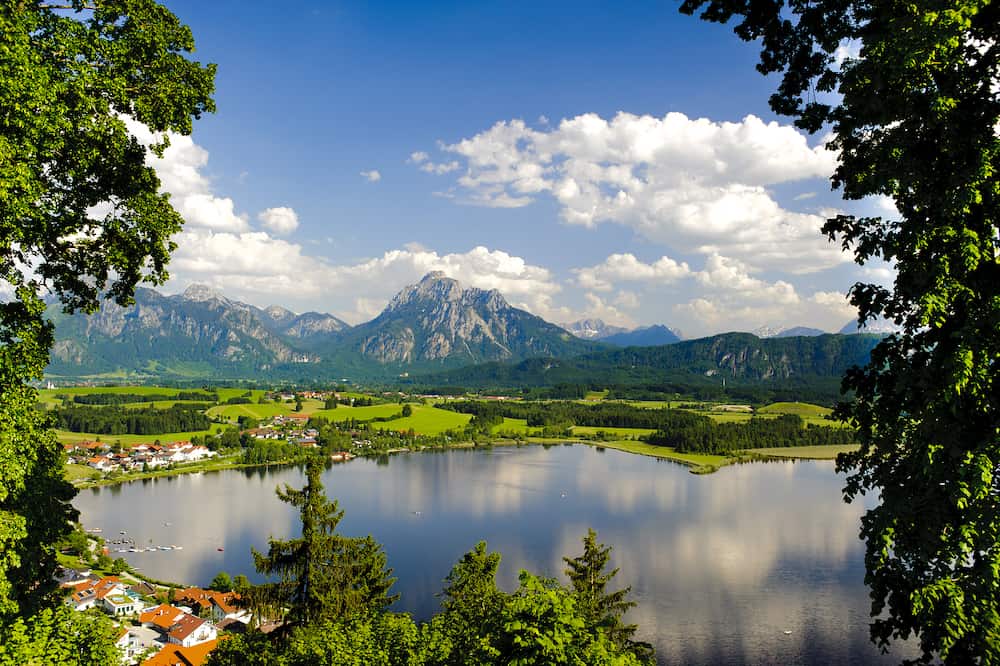
Bavarian Food
There are lots of restaurants offering traditional delicious food that you must try whilst you are in Fussen. Such as:
- Weisswurst – white sausage, made with a delicate blend of veal, pork and spices with mustard on the side, alongside a huge pretzel and a beer.
- Bavarian Leberkäse – A liver meatloaf, although surprisingly liver is not used. A mixture of beef, pork, lard, water and salt are mixed together to form a loaf, which is then sliced and eaten on some bread with mustard. The crispy bits on the outside are the best.
- Semmelknoedel – Bread dumplings infused with garlic and onion, ideal for mopping up any sauce/gravy that is on your main dish.
- Spaetzle – similar to mac n cheese, these Bavarian noodles are covered in cheese and are seen as a real comfort food.
- Schweinshaxe – Marinated and slow roasted skin on pork knuckle, often served with a large potato dumpling (Knödel).
- Bavarian Pretzel – Huge, salt encrusted pretzels that are soft on the inside and crunchy on the outside.
These are just a few of the traditional delights on offer. Most often served with a large side of Bavarian beer.

There are plenty of Füssen attractions on offer. It is easy to get there by train from Munich or Innsbruck, and once you are settled into your hotel room there are ample opportunities for exploring all day long.
This is one of those areas that you can visit any time of the year. During the summer months, you will get lovely weather and the pretty lakes are great for swimming in, with lots of hiking and biking trails but it also becomes very crowded, especially if you want to visit places like Neuschwanstein Castle.
During the winter months, the whole region turns into a beautiful winter wonderland. The lakes all freeze over so plenty of ice skating is on the agenda or you can enjoy magical strolls through the snowy landscape or enjoy some nearby skiing.
This can be an amazing time to visit, and you will see fewer crowds than in summer. It really is a pretty little place.
Recommended tours in Füssen
- Canyoning basic in the Starzlachklamm
- Neuschwanstein Castle Skip-the-line Ticket Including Guide
- Full-Day Bavarian Castles Tour from Fussen
- Skip the Line: Neuschwanstein Castle Private Tour From Füssen or Hohenschwangau
- Private tour of the best of Fussen – Sightseeing, Food & Culture with a local
- Rent a bike trom fuessen to Neuschwanstein castle
- Füssen Private Walking Tour With A Professional Guide
If you’d like to save it for later, please save it to Pinterest.
